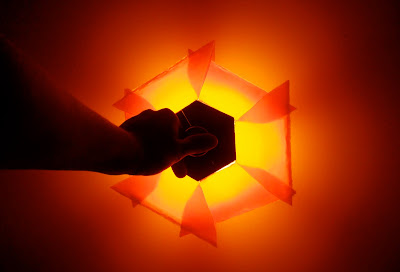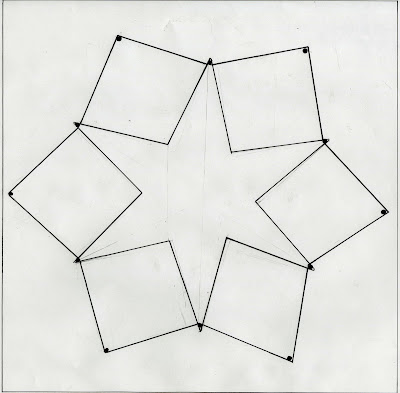
FIELD OF LIGHT : GLOW

PLAN : ILLUMINATED

SECTION: PLAN VIEW CUT

ELEVATION: ILLUMINATED

SECTION : CUT FROM MIDDLE OF ELEVATION

The above drawings were part of this project as well. We could use either pencil or pastel on colored canson paper to depict an elevation, plan, and field of light drawing. I choose to work in colored pencil which involved quite a bit of layering! This is the first project drawings we have done which involved color, I don't normally work in colored pencils so this assignment was a learning process in how to layer and blend additionally. I added an additional section drawing, I thought it balanced out the composition of my paper more effectively.

ILLUMINATED MODEL IN THE DARK: PLAN

MODEL IN THE LIGHT: PLAN


ILLUMINATED MODEL IN THE DARK: ELEVATION

MODEL IN THE LIGHT: ELEVATION
Twelve trapezoidal faces held at a slight curve. Inspired by the warm glow cast in the pictures of the parking garages at night (see below in luminaire research) Made once again of acetate, tracing paper, and bamboo skewers. The faces that you see are made out of the yellow and orange acetate and the tracing paper, while the bamboo skewers internally help support the structure. This model faced many challenges in its creation because acetate doesn't like to be help at a curve...even less so when doubled as I did with yellow and orange sheets. When I sketched this model out I did not mean for the trapezoid faces to be overlapping, but as it came together I experienced the happy accident of the mod-looking edges and shapes of richer color that were made when the trapezoids overlap as they do it the model above. The material shaped what my project became. Although I'm happy with my final result I learned a lesson in how hard acetate is to work with. Finally, I'm satisfied with the warm glow my final model projects. I hope you enjoy it as well!













































